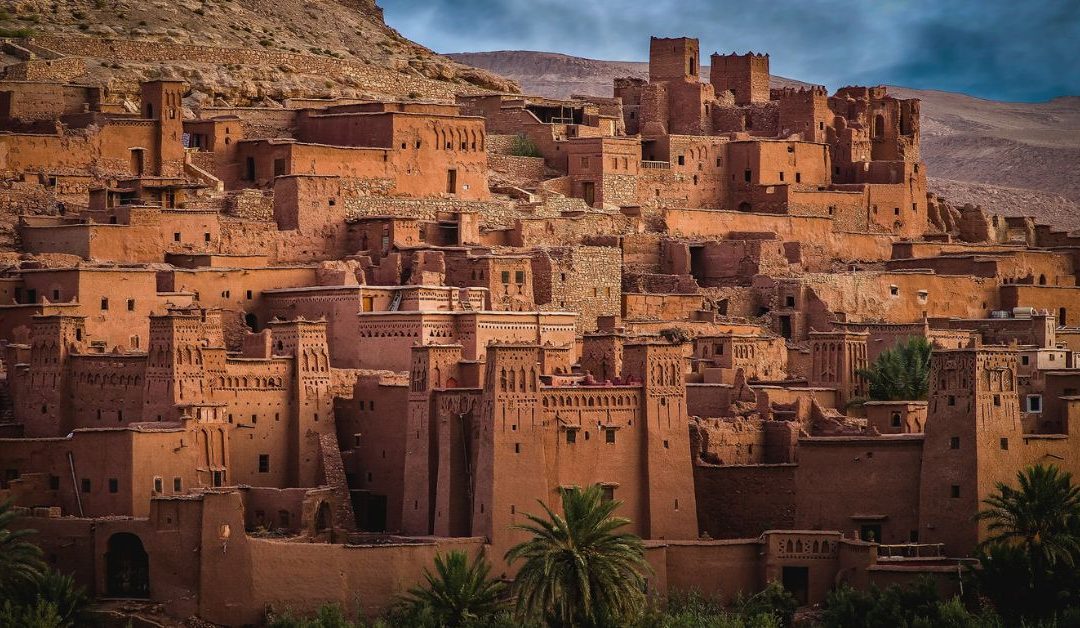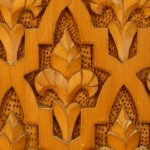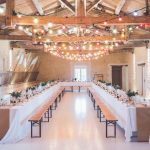The Alhambra Palace is a famous building known for its beautiful and detailed architecture. The woodwork there is special and shows how skilled people were in making things out of wood a long time ago. The patterns and pictures carved on the wood at the Alhambra Palace tell us about the different cultures that inspired the people who built it.
When we look at the pretty decorations on the wood, we can see they have meanings behind them. These designs make the Alhambra Palace even more interesting and help us understand what life was like during that time.
Back then, talented woodworkers created amazing things. They used symbols and patterns that represented different cultures. It’s like they were telling a story with their artwork. The Alhambra Palace is a great example of their incredible skills and creativity.
An Overview Of Islamic Woodworking
The Alhambra Palace is a special place with beautiful woodwork and carvings. People who are good at making things out of wood created these amazing pieces. They used special techniques and designs from the Islamic culture. They even used wood from faraway places like India and China. The furniture they made had simple lines and geometric shapes, and they put it together without using glue or nails. They used clever ways to connect the pieces of wood. This made it easier to take the furniture apart and move it around. People have been visiting the Alhambra Palace for many years, and they still admire the attention to detail in the woodwork. The wood carvings show pictures of nature and religious symbols, reminding us of the great times in Muslim culture. We’ll learn more about these decorations and their special details.
Intricate Carvings And Symbolic Motifs
The woodwork at the Alhambra Palace is amazing. Skilled craftsmen called Moorish artisans have been using special ways for a long time to create beautiful things from wood. They use their own cultural ideas to make unique designs that decorate the walls and ceilings of the palace.
These carvings have different symbols that tell us different stories. For example:
- Craftsmen carve animals like lions, tigers, birds, and snakes to depict strength, wisdom, and power.
- Geometric shapes like squares, diamonds, and circles have spiritual meaning or represent balance.
- Carvings of trees, flowers, and leaves remind us of the beauty and fragility of life.
Each carving has its own special meaning and adds to the history of the palace. As you explore deeper, you’ll see even more detailed patterns on pillars, archways, and columns. Skilled craftsmen made these patterns using ancient traditions.
These carvings help us understand how people lived in the past and connect us to our cultural heritage today. They remind us of Spain’s history and show us how people expressed themselves through art.
Complex Geometric Patterns
The woodwork at the Alhambra Palace is unique and it helps us learn more about the history of the palace and how people built it. The palace has beautiful arches and walls with intricate patterns carved into them. Skilled craftsmen made these patterns with great care and attention to detail.
The patterns you see in the palace repeat in different places, but each one is unique and has its own meaning. Some of the patterns in the woodwork at the Alhambra Palace are there to show how important something spiritual is.
Even though many years have passed, the woodwork at the Alhambra Palace is still impressive and makes people feel amazed. When you look closer, you can see the incredible artistry and creativity in the design.
When you visit the Alhambra Palace in Spain, there are many things to explore and enjoy. It is a very special place and one of the most well-known landmarks in the country.
Expressive And Artistic Design
The woodwork at the Alhambra Palace is famous because of its details and beauty. They used different types of wood to create patterns and decorations all around the palace. The patterns in the woodwork have special meanings and artisans made them using shapes like circles, stars, and hexagons. They also carved scenes of gods and goddesses, using ribbons, flowers, and other decorations. The wood they used came from trees like walnut, boxwood, and pine.
Skilled builders from long ago worked on the Alhambra Palace, and their craftsmanship was amazing. They made the palace look even more spectacular with their artwork. The artisans created designs that came from all over the palace and these designs tell us stories about the past. They show the importance of art in expressing ideas and how people from different cultures can understand it.
Use Of Color
The colors used in Islamic architecture, like in the Alhambra Palace, are interesting. They didn’t have modern tools to make the colors, but they still made them look vibrant and bright.
The patterns and colors in the woodwork have special meanings that are important to Islamic culture. These symbols and colors show us the beliefs and ideas of the people who built the palace.
Because of the symbolic meanings and the beautiful colors, the Alhambra Palace is a special place that shows Islamic culture and art.
Color In Islamic Architecture
In Islamic architecture, architects use colors to express important religious ideas. They choose vibrant and bright colors by using specific materials.
At the Alhambra Palace, the woodwork has beautiful colors like red, blue, and green on the walls. These colors represent the five pillars of Islam, which are important beliefs and actions for Muslims.
The wood they used for the carvings was often cedar, which gives a warm tone to the design and makes it look even more special.
The Alhambra Palace is a great example of how colors can make artwork look powerful and make people feel amazed when they see it.
Color Symbolism In Alhambra Palace Woodwork
The Alhambra Palace demonstrates how people can use colors to represent religious ideas. The woodwork in the palace has beautiful shades of red, blue, and green. People think that these colors represent important beliefs and actions in Islam.
The wood they used for the carvings is cedar, which makes the colors look warm and adds to the detailed patterns. This is an example of how Moorish art influenced Islamic architecture in Spain. They used colors in a way that makes people feel strong emotions when they see it.
The Alhambra Palace is a magnificent place that shows how colors can create amazing artwork and make people feel amazed when they look at it.
The Influence Of Islamic Art On Spanish Culture
The Alhambra Palace is a beautiful example of how Islamic art influenced Spanish culture. In the palace, there are beautiful wooden decorations that have special symbols on them. The Moors built the palace in 889 AD, and it sits on a hill in Granada, making it easy for people to see from far away. Artisans use polished wood from nearby cedar trees to create the patterns in each room. Sultan Muhammad V renovated the palace in 1319 AD, covering the walls and ceilings with even more detailed designs. These woodwork details are not only pretty to look at, but they also show the important role of Muslims in Europe during medieval times. Today, people continue to find inspiration from these designs and create new things with similar patterns.
Decorative Textiles And Weaving
The woodwork at the Alhambra Palace gives great artistry and craftsmanship of Moorish culture. The people who built it were very talented and skilled at creating beautiful designs and making things by hand. Inside the palace, they had fancy tapestries, mosaics, and other decorations made from fabrics. These artworks had a special meaning related to the Islamic religion and were both practical and symbolic.
| Symbolism | Purpose | |
| 1 | Intricate geometric designs | Representing order & eternity |
| 2 | Flowing arabesques patterns | Expressing beauty |
| 3 | Rich-colored floral motifs | Depicting paradise |
| 4 | Calligraphy featuring Koranic verses | Connected to religious beliefs |
The Alhambra Palace is a famous place that showcases the amazing artwork and skills of the Moors. They created beautiful things like tapestries, mosaics, and other decorations. These special items were not only useful but also represented their Islamic beliefs.
The weavings found in the Alhambra Palace tell stories about the people who made them and their beliefs. These special pieces, like carpets, rugs, and curtains, are full of beautiful patterns and symbols. People who believed in different religions made these special weavings. They used these weavings to show how important religion was in their lives and how they respected and accepted other faiths. By looking at these weavings, we can learn a lot about the culture and history of that time.
Incorporation Of Christian Symbols
The woodwork at Alhambra Palace is like a special puzzle that tells a story. People from Islamic and Christian religions worked together to create beautiful designs in the palace. This happened in Granada a long time ago. The palace also has lovely gardens and stonework with special patterns. All these things tell us about life in Spain during that time and how different cultures influenced each other.
Themes Of Nature And Riches
The woodwork at the Alhambra Palace was very important in its construction. It had beautiful carvings and designs made from cedar and pine wood, which came from trees in nature. The designs were like pictures of flowers and other things from nature. They used natural dyes to color the wood, too. The woodwork showed how much the people who built the palace loved nature and believed in its importance. It had special symbols too that brought positive energy to the palace. The skilled woodwork is still admired today. It reminds us of the beauty of nature and how important it is to appreciate and protect it.
Floral Designs
The woodwork in the Alhambra Palace is very special because it has beautiful carvings of flowers. Skilled craftsmen made these carvings with great skill and they hold a lot of meaning. The flowers carved into the woodwork of the palace are like symbols that represent important things to the people who made it. The skilled artisans made carvings on different types of wood and painted them in bright colors. This made the palace look even more beautiful. The carvings helped keep the palace cool too in hot weather. Thus, the woodwork in the palace is important because it has pretty designs and it tells us about the values and beliefs of the people who made it.
Symbolic Representations
The carvings at the Alhambra Palace are famous for their special symbols that represent nature and plenty. Skilled artists carved these symbols on different types of wood, like cedar, walnut, pine, or lime tree woods. They used bright colors to make the carvings look even more beautiful. These symbols showed things like growth, fertility, and spiritual enlightenment. Some symbols also represented death and rebirth, reminding people that life can be short but full of new beginnings. The vibrant colors used in the carvings, like red and gold, added to their meaning. They made the palace feel magical and rich, like a paradise on Earth. That’s why people have always admired this part of the palace.
Natural Material Usage
The Alhambra Palace used special types of wood like cedar, walnut, pine, and lime tree to make it look beautiful and unique. They took care of these woods so that the carvings would stay detailed and last a long time. The people who built the palace wanted it to be both practical and beautiful, like in many Islamic cultures. They also made sure to protect the environment by using sustainable practices. These efforts show why people have admired the woodwork at the Alhambra Palace for so long.
The Significance Of The Alhambra Palace’S Woodwork In History
The woodwork at the Alhambra Palace is beautiful and has amazed people for a very long time. It shows the skill and creativity of the artists who made it. Architects designed the palace to be a great example of the Islamic style of buildings.
When you walk through the palace, you might not realize that someone chose the wood used. They picked each piece to make sure it was strong and would last a long time.
To understand how special these works of art are, it’s important to know their history. The Alhambra Palace is like a museum that takes you back in time and helps you imagine what life was like many years ago.
When you visit, you can see the detailed cedarwood beams and painted wooden panels that show scenes from poems and stories.
The palace is more than a pretty place to look at. It represents important values that stayed through many generations. It has even inspired people all around the world with its amazing design and interesting story.
This ancient palace is a symbol of our past and reminds us of how talented and creative people can be when they have the freedom to express themselves.
Frequent-Asked Questions
Which Materials Did The Craftsmen Use To Create The Woodwork Of The Alhambra Palace?
The woodwork of the Alhambra Palace is famous for its beautiful designs that show the skill of the builders. Moorish kings built the Alhambra Palace a long time ago using different types of wood.
They chose local cedar, cypress, lemonwood, and ebony from North Africa. Artists carved these woods with patterns inspired by Islamic art, which is full of shapes and designs.
The woodwork in the palace is still there today, and it represents the amazing work of the craftsmen from many years ago.
How Have People Preserved The Woodwork Of The Alhambra Palace Over Time?
How did they keep the woodwork at the Alhambra Palace in good condition over the years?
People who understand how important the woodwork at the Alhambra Palace is have made sure to keep it safe and in good condition.
They use special methods to restore and protect the woodwork. For example, they paint faded designs again using natural dyes and replace any broken pieces with new ones that look like the original ones. They make sure to use materials from the local area to keep everything authentic.
All these efforts help keep the woodwork at the Alhambra Palace looking stunning and make sure that it can be fun for future generations.
What Other Cultures Have Influenced The Woodwork Of The Alhambra Palace?
The woodwork of the Alhambra Palace is a special mix of Moorish and Arabic influences. Skilled craftsmen from these cultures created good designs in the wooden panels, carvings, and doorways. You can see the unique styles of both cultures in the intricate details. Together, they make the palace’s woodwork one-of-a-kind and have fascinated people for a very long time.
How Did The Alhambra Palace’s Woodwork Inspire Other Works Of Art?
The woodwork at the Alhambra Palace is famous for its beautiful Arabic and Moorish designs. These designs have inspired artists for many years and continue to be influential even today. Painters who wanted to show the Middle East in their artwork used the palace as inspiration. The influence of the palace’s woodwork is visible too in modern artworks like stained glass windows and furniture designs. It’s amazing how the woodwork of the Alhambra Palace has had a big impact on art throughout history and even now.
What Are The Key Features Of The Alhambra Palace’s Woodwork That Make It So Significant?
The woodwork at the Alhambra Palace is very special and has a lot of historical meaning. The designs on the walls and ceilings draw inspiration from Islamic culture, while the carvings depict pictures of nature. These beautiful works of art have influenced architects all over Europe to create similar designs. That’s why the woodwork at the Alhambra Palace is still important and admired by many people today.
The woodwork at the Alhambra Palace is a masterpiece created by talented builders long ago. It showcases beautiful designs and vibrant colors, drawing influence from various cultures. This artwork has inspired many other artists throughout history.
The woodwork represents Moorish culture and shows how skilled people were in the past. It serves as a reminder too of how people constructed buildings and traded goods with each other.
The Alhambra Palace’s woodwork is like a shining star in our culture. It demonstrates what people can achieve when they work together towards a common goal.
In simple words, this artwork offers us a unique glimpse into our past, and future generations will remember it.







